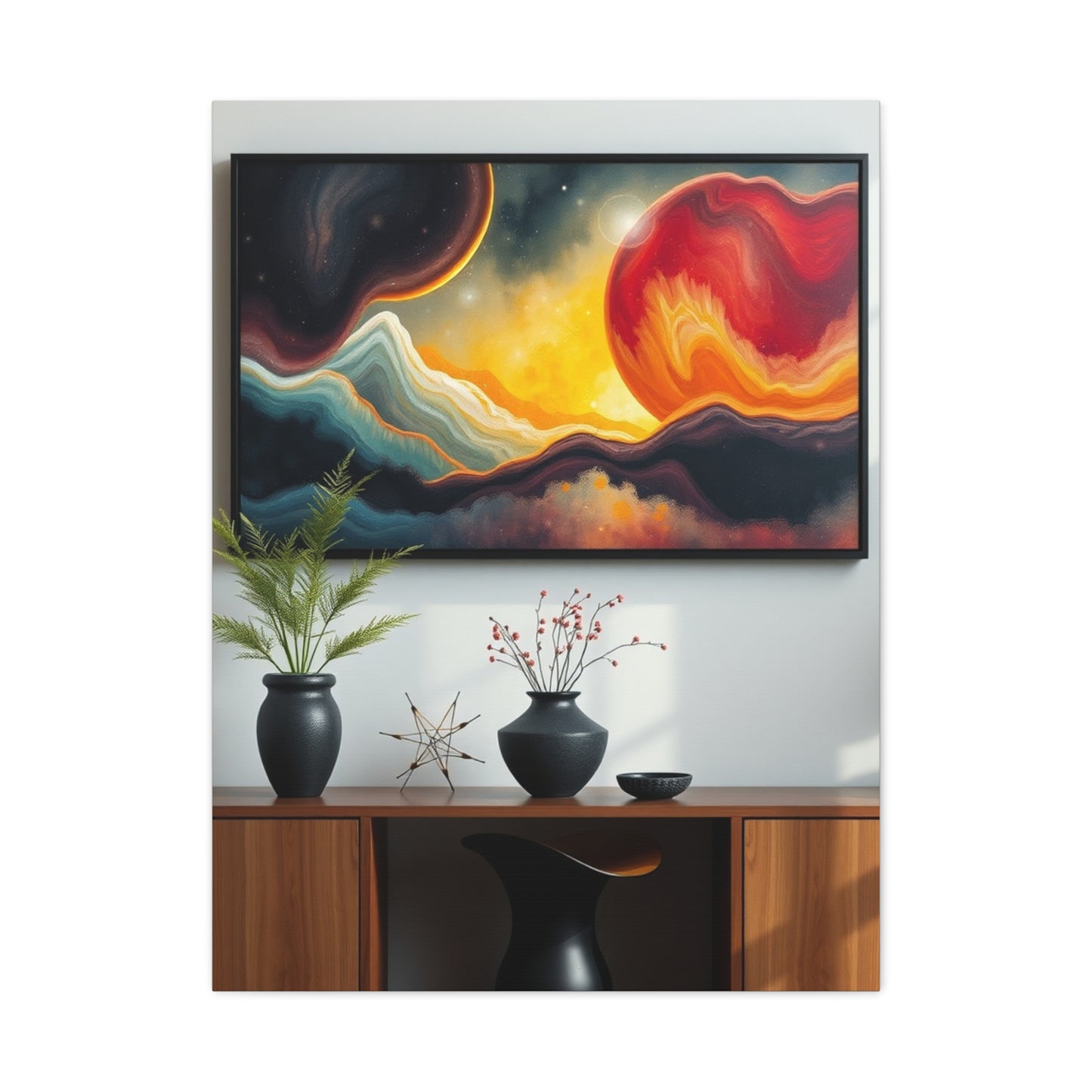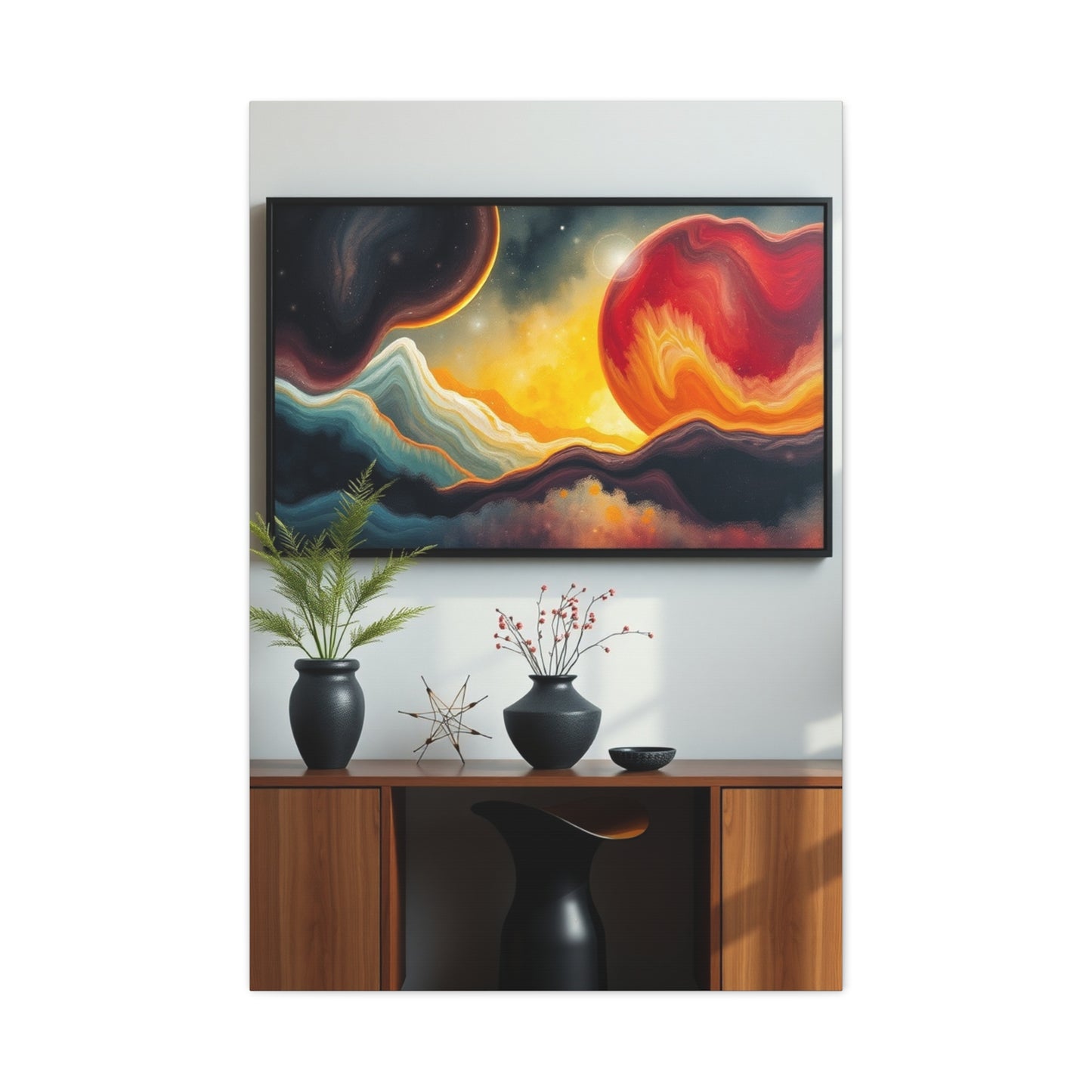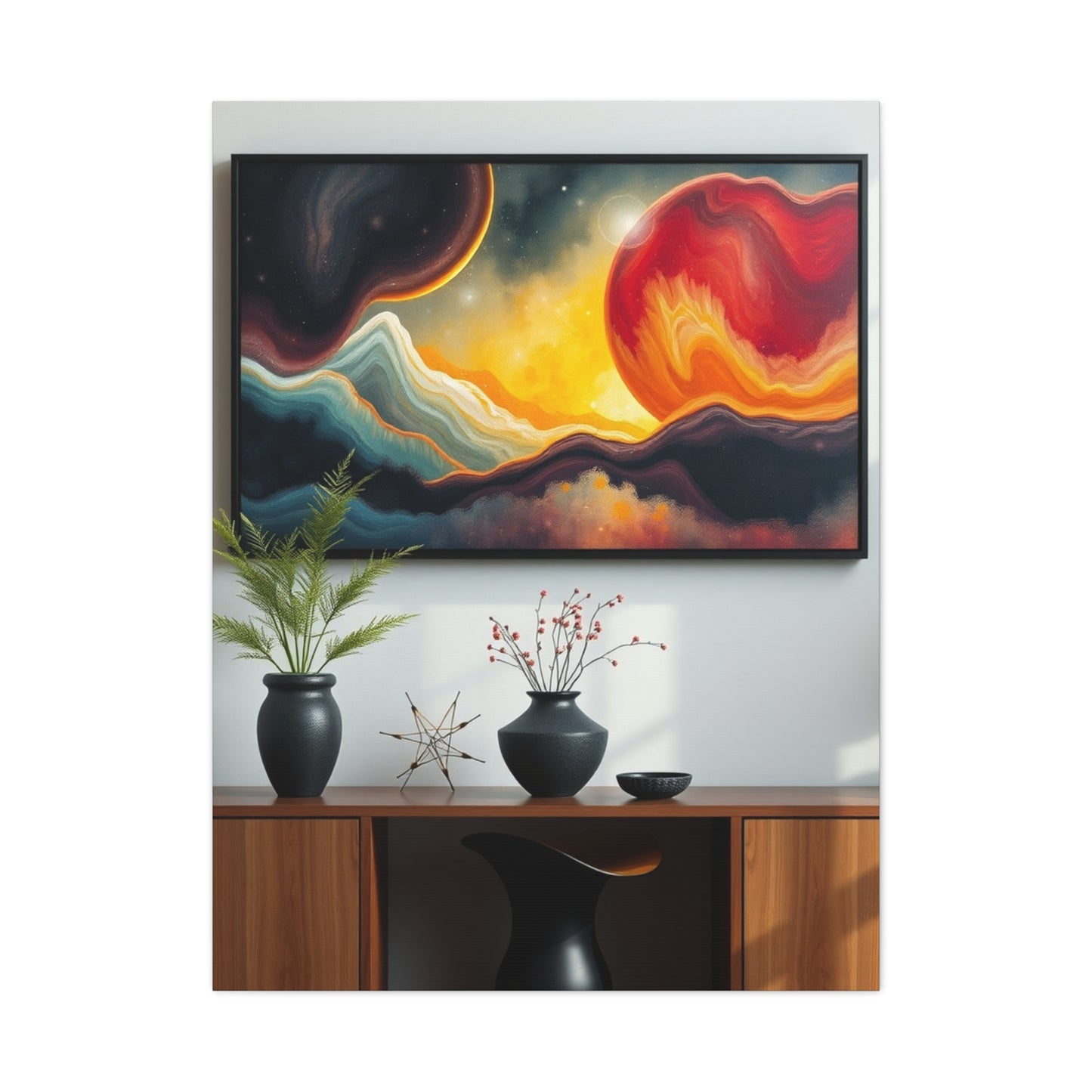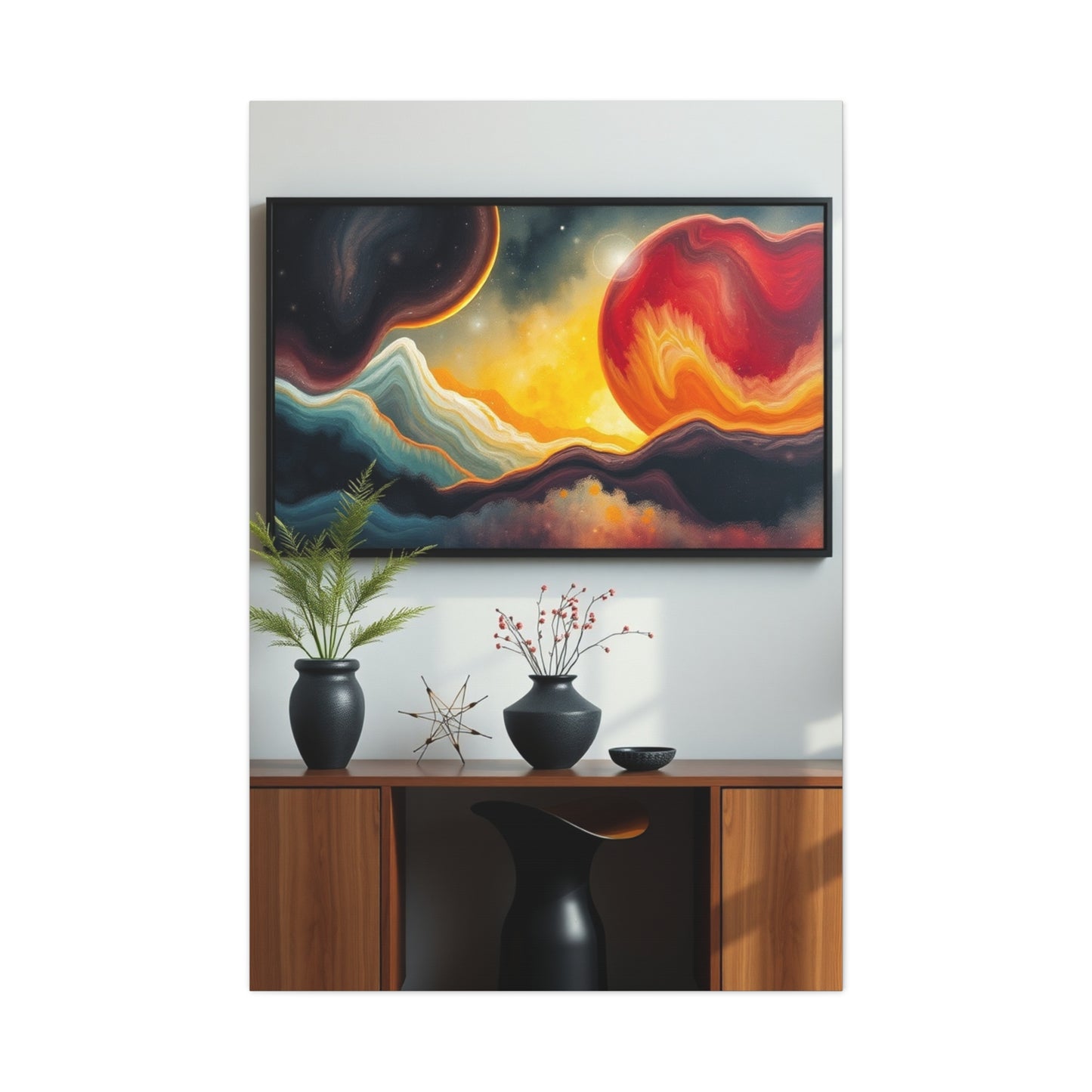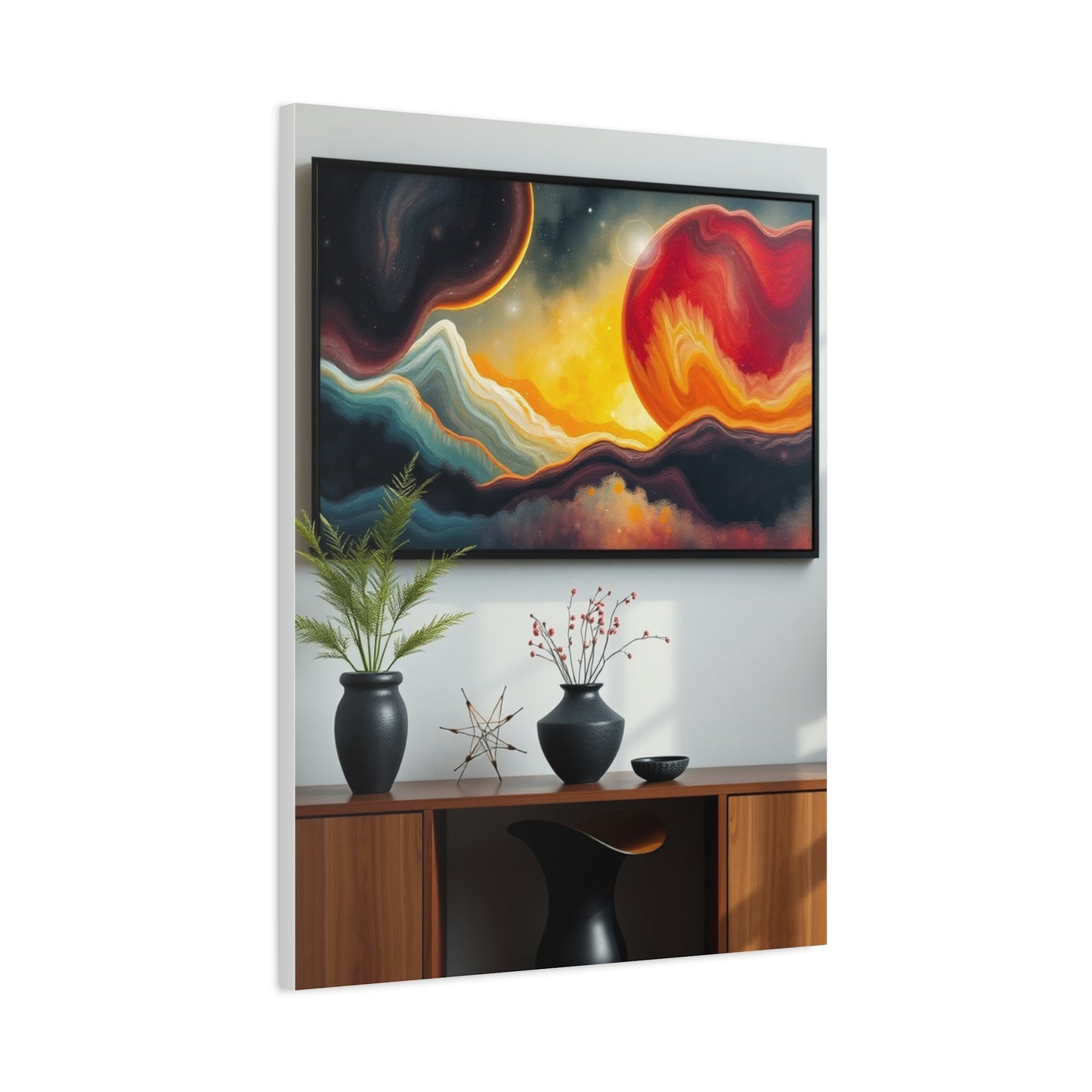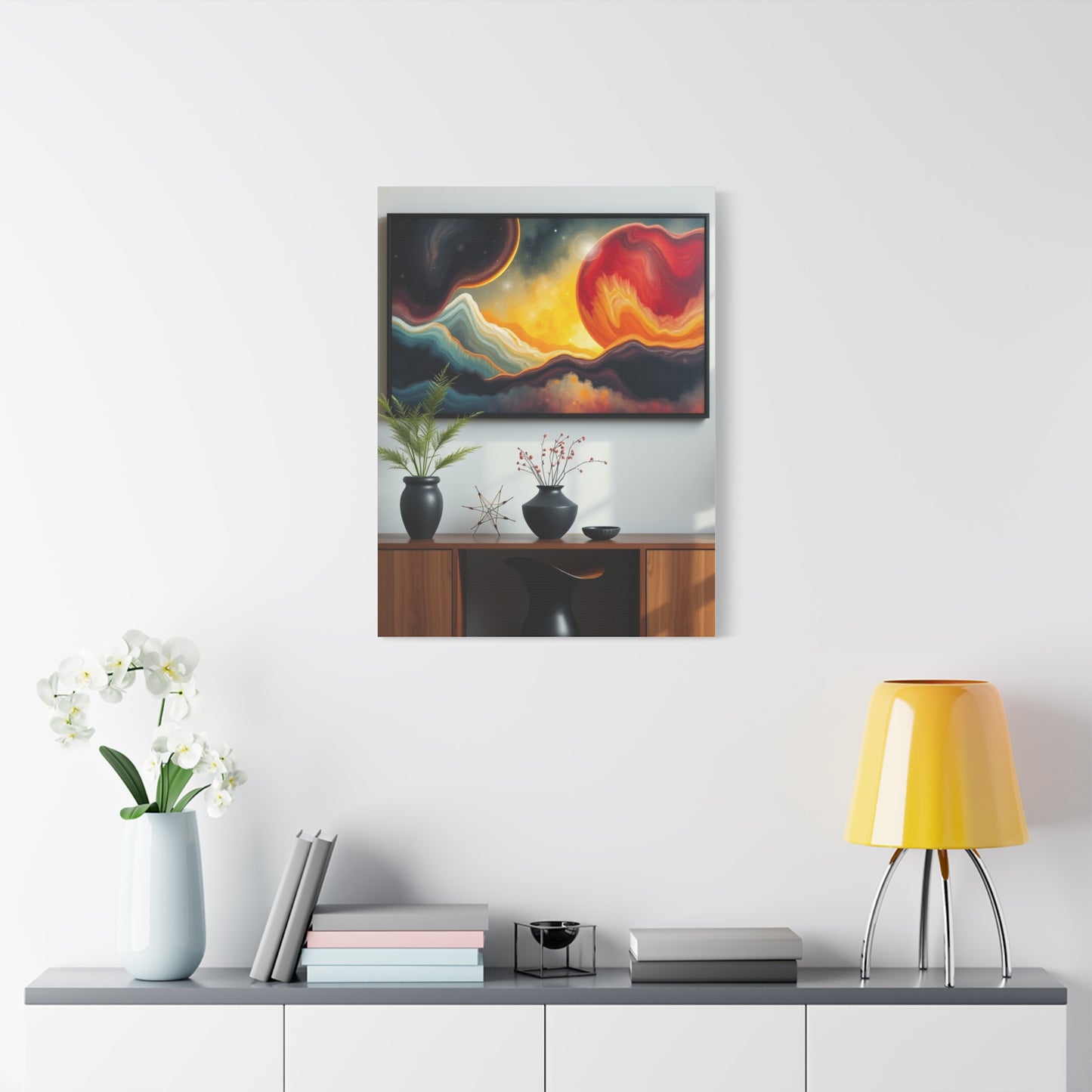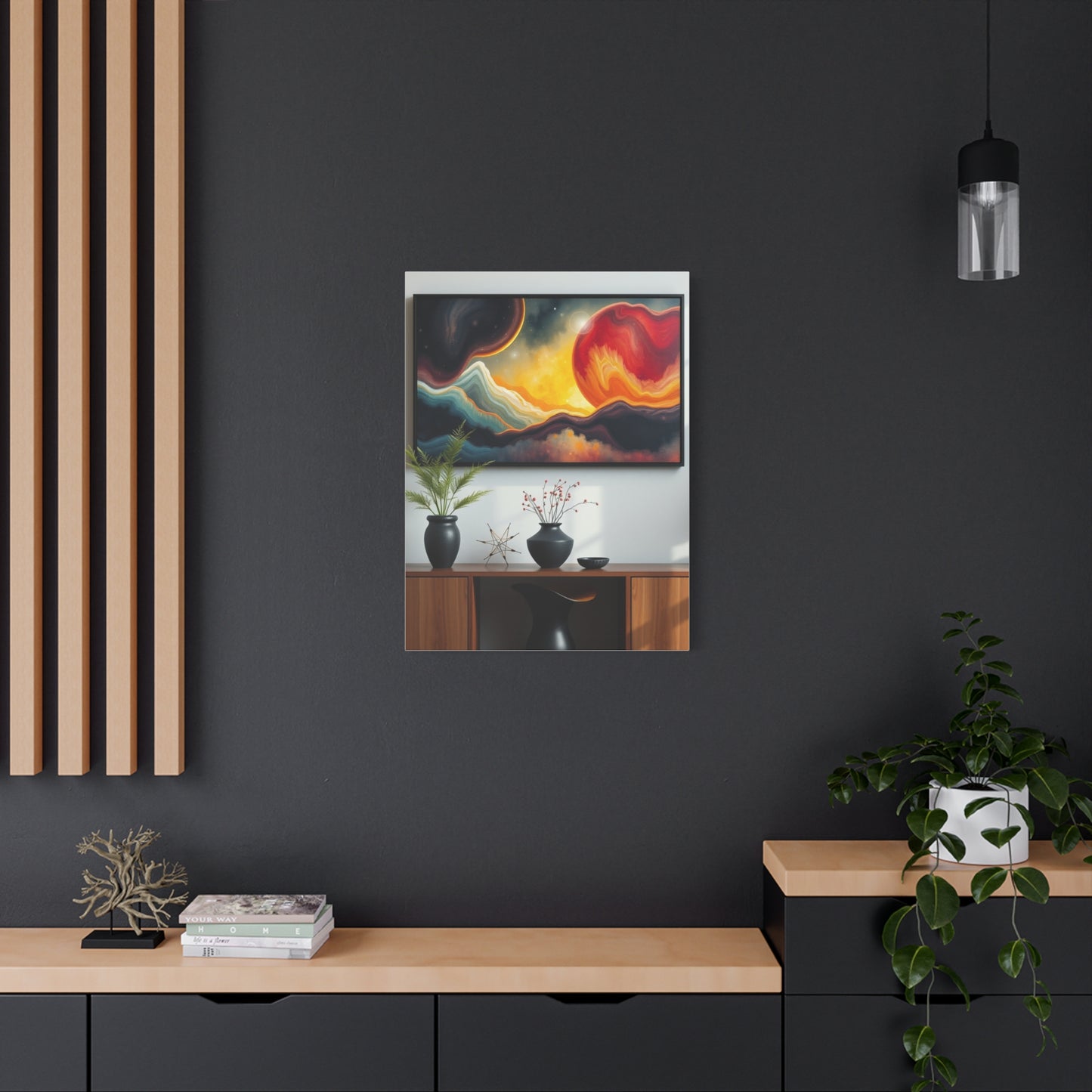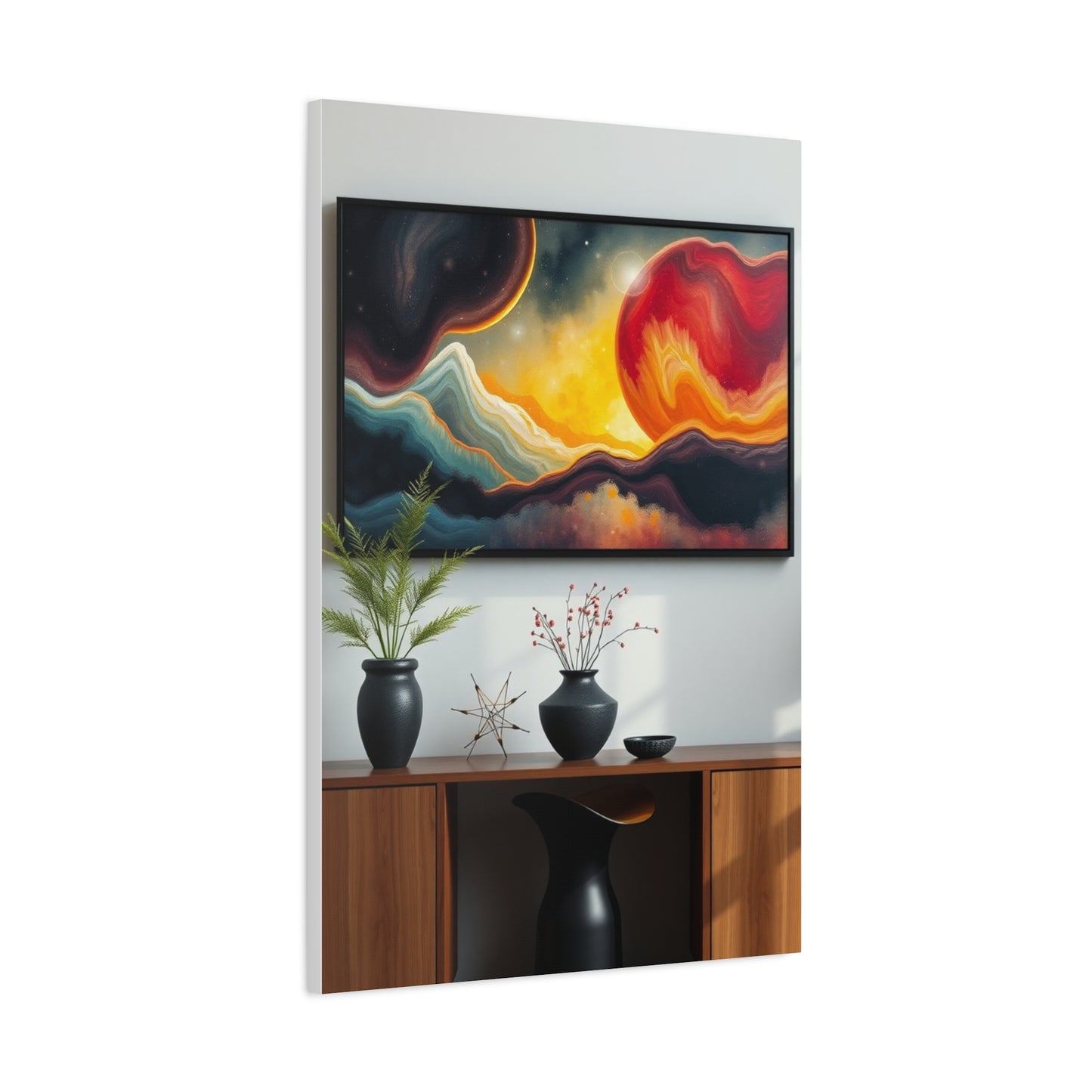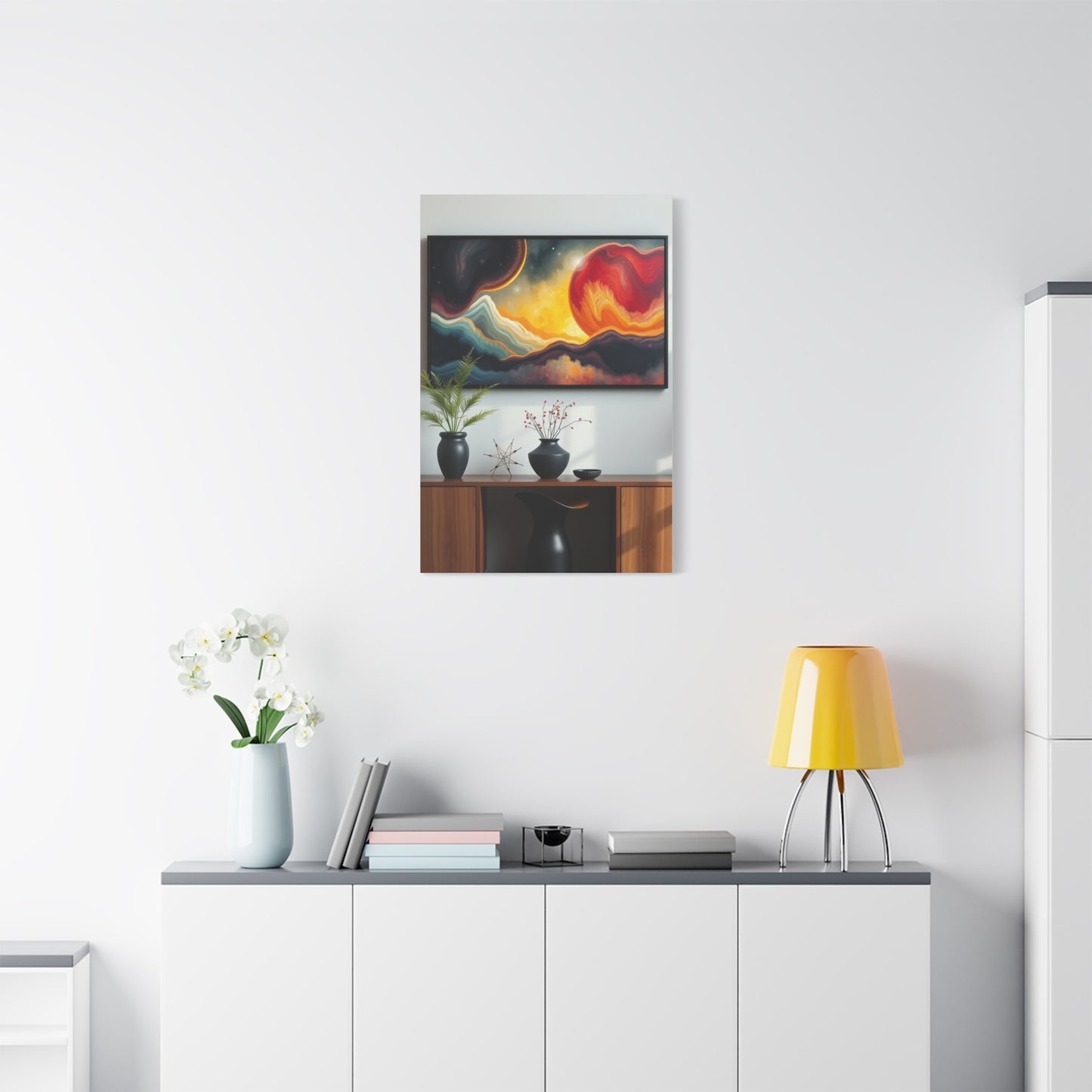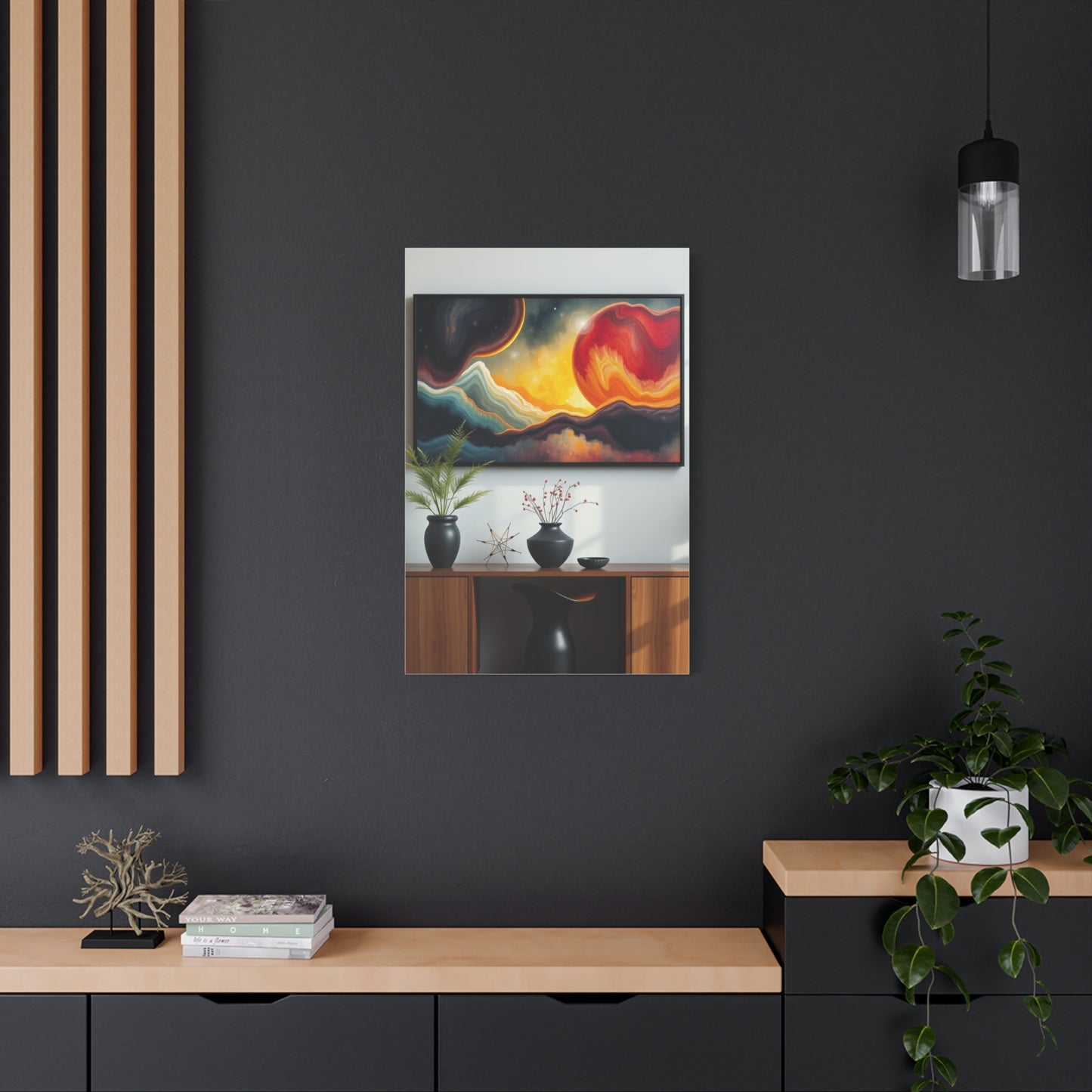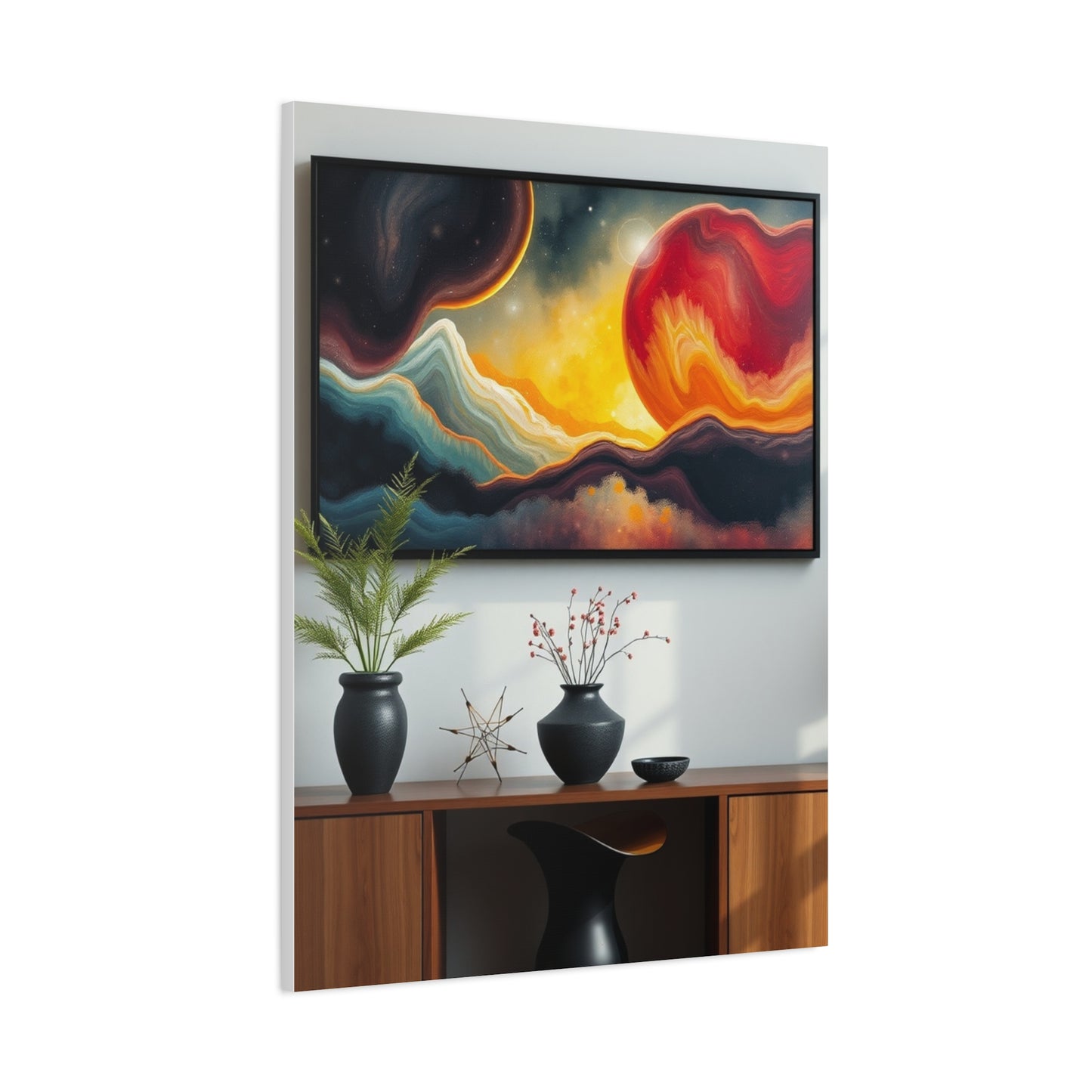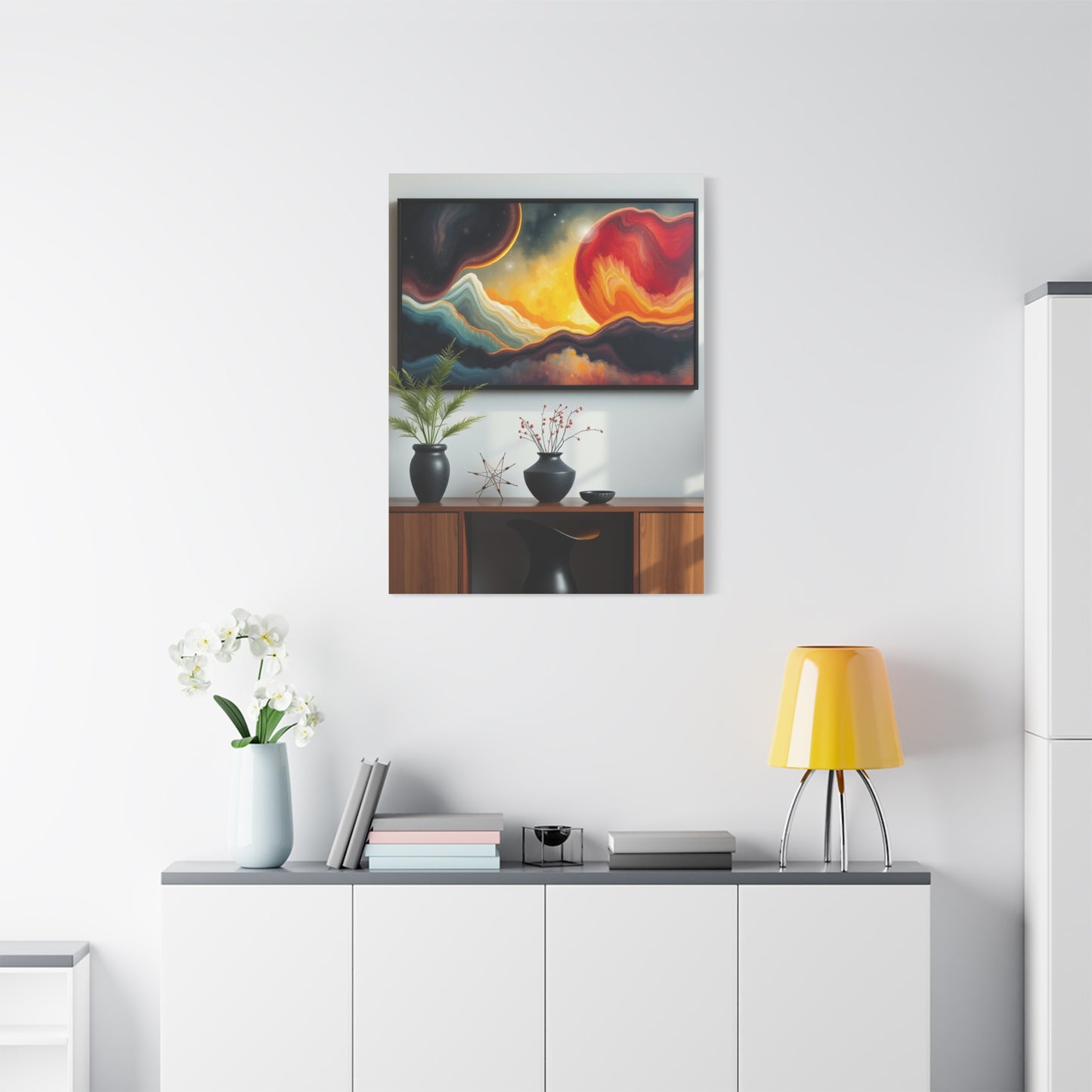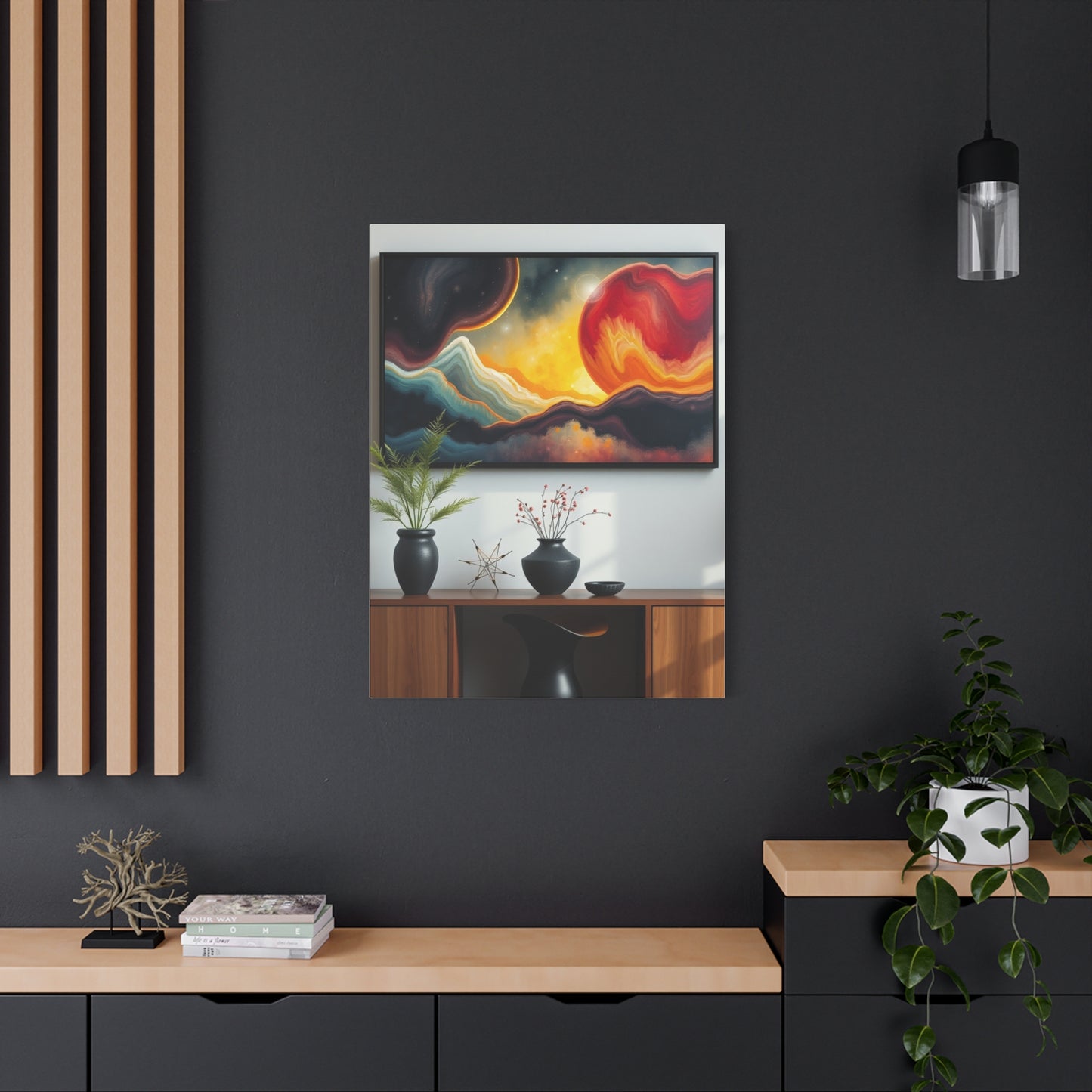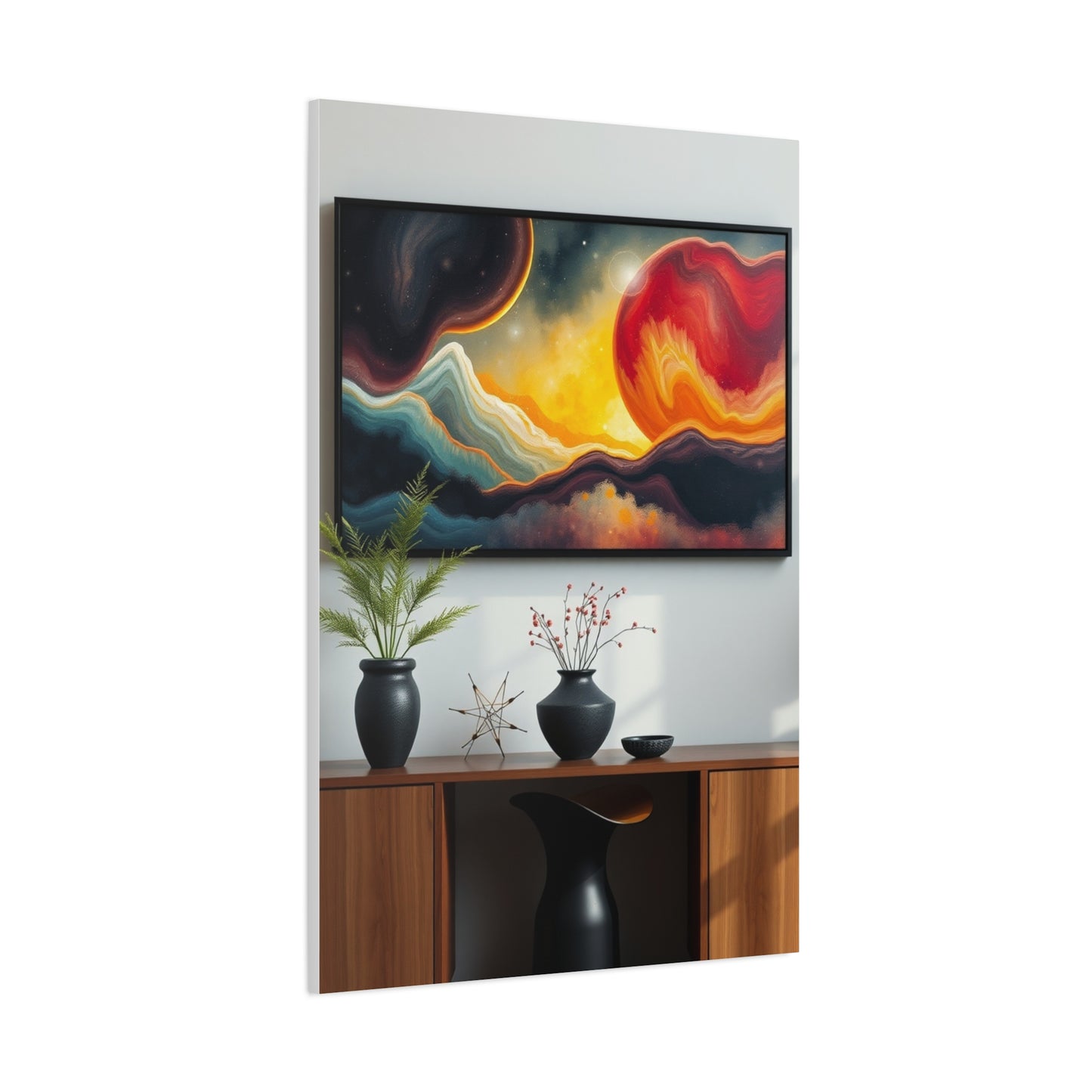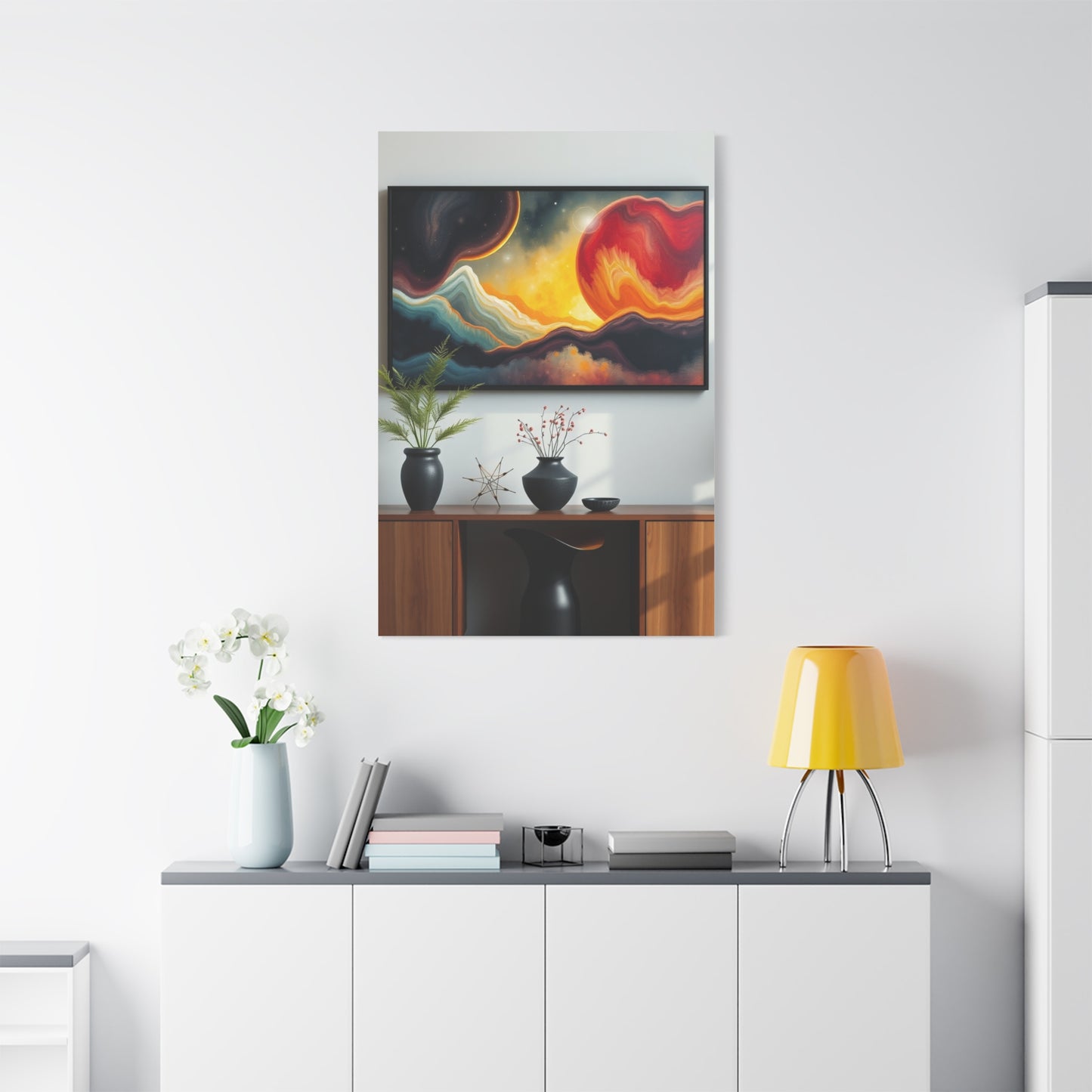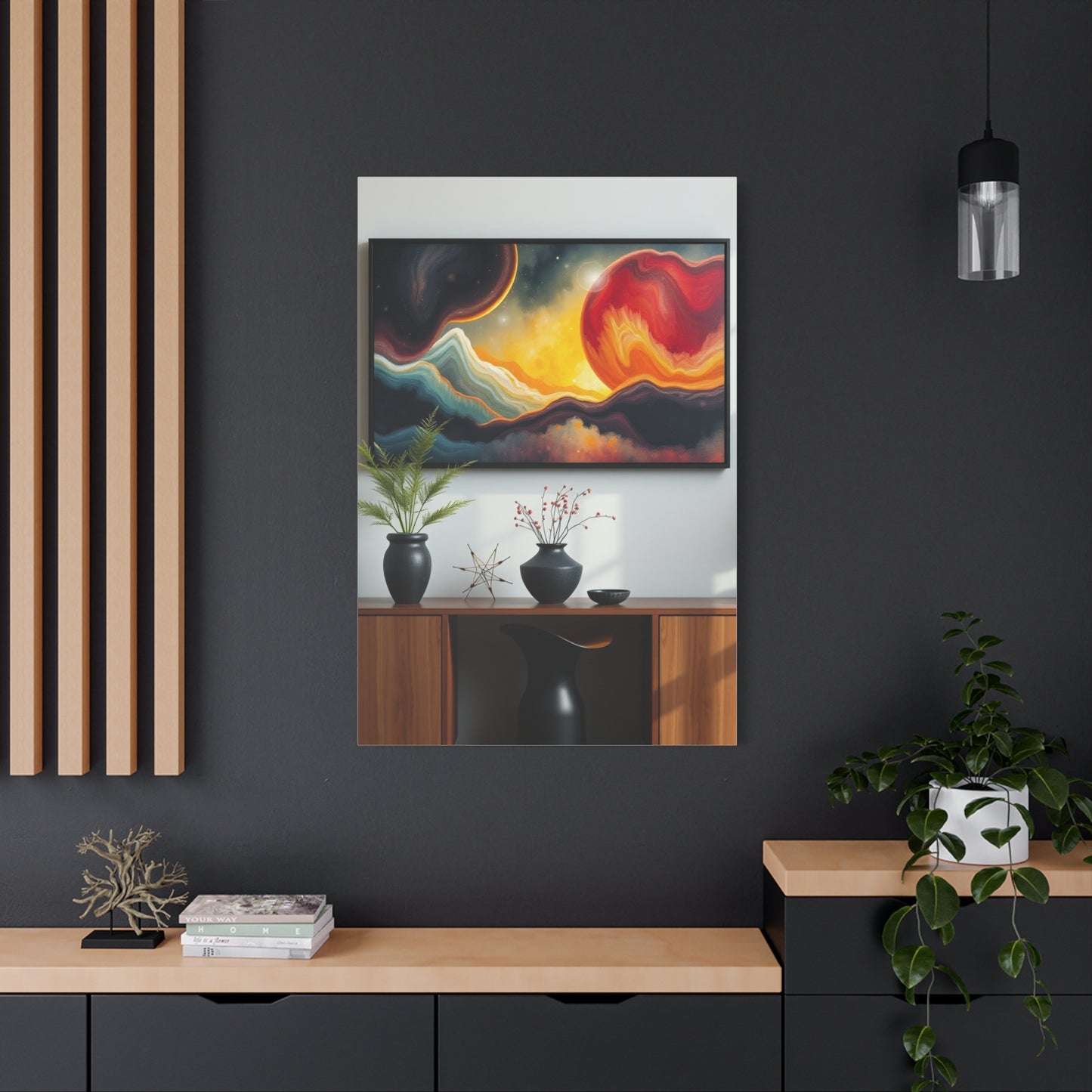Refined Modernist Tableau: Art that Defines Modern Luxury and Minimalist Style
The world of contemporary visual artistry has witnessed a remarkable evolution in recent decades, with modernist wall art emerging as a defining element of sophisticated living environments. This artistic movement represents far more than mere decoration; it embodies a philosophy of refined aesthetics, innovative expression, and purposeful design that transforms ordinary rooms into extraordinary experiences. The essence of the modernist tableau lies in its ability to communicate complex emotions and concepts through simplified forms, creating visual narratives that speak directly to the contemporary soul.
Modernist wall art represents a paradigm shift from traditional artistic conventions, embracing minimalism while maximizing impact. These pieces serve as focal points that anchor entire rooms, creating dialogue between the viewer and the artwork while establishing atmospheric harmony throughout the living environment. The careful selection and placement of such pieces reflects not only personal taste but also an understanding of how art functions within contemporary lifestyle frameworks.
The movement toward modernist tableau has been driven by society's increasing appreciation for clean lines, geometric precision, and the power of negative elements to create profound visual statements. Unlike ornate traditional pieces that rely on intricate details and elaborate ornamentation, modernist wall art achieves its impact through strategic simplicity, allowing each element to serve a specific purpose in the overall composition. This approach resonates particularly well with contemporary homeowners who seek to create environments that feel both sophisticated and accessible.
Contemporary artists working in this medium understand that modernist wall art must function on multiple levels simultaneously. It must serve as a visual anchor, a conversation starter, a reflection of personal values, and a component of the larger environmental design scheme. The most successful pieces achieve this multifunctional role while maintaining the clean, uncluttered aesthetic that defines the modernist approach.
Behind Contemporary Modernist Tableau
The philosophical foundations of modernist wall art extend far beyond surface aesthetics, rooting themselves in fundamental principles of human perception, psychological well-being, and environmental harmony. This artistic approach emerged from a desire to strip away unnecessary complexity and focus on essential elements that communicate meaning through pure form, color, and composition. The philosophy embraces the concept that less can indeed be more, provided that the remaining elements are carefully chosen and thoughtfully arranged.
Central to this philosophy is the belief that art should enhance rather than overwhelm the living environment. Modernist tableau achieves this balance by creating pieces that complement architectural features while maintaining their own distinct presence. The artwork becomes part of a larger conversation between the built environment and human habitation, contributing to an overall sense of harmony and purposeful design.
The psychological impact of modernist wall art cannot be understated. Research in environmental psychology has demonstrated that clean, uncluttered visual environments contribute to reduced stress levels, improved focus, and enhanced creativity. Modernist tableau supports these benefits by providing visual interest without creating sensory overload. The careful use of color, form, and composition creates a sense of calm sophistication that promotes mental well-being and emotional balance.
Another crucial aspect of this philosophy involves the democratization of art appreciation. Traditional art forms often required extensive cultural knowledge or artistic education to fully appreciate their meaning and significance. Modernist wall art, however, speaks a more universal language, allowing viewers to connect with the work on an intuitive level. This accessibility does not diminish the sophistication of the pieces; rather, it expands their potential impact and relevance.
The environmental consciousness inherent in modernist philosophy also influences contemporary tableau creation. Many artists working in this medium prioritize sustainable materials, production methods, and long-lasting designs that resist the disposable culture mentality. This commitment to sustainability aligns with the broader modernist principle of purposeful design, where every element serves a function and contributes to the overall integrity of the piece.
The philosophy also embraces technological innovation as a tool for artistic expression. Digital creation methods, advanced printing techniques, and innovative materials allow contemporary artists to achieve effects and scales that were previously impossible. This technological integration expands the possibilities for modernist wall art while maintaining adherence to core principles of clean design and purposeful composition.
Evolution of Modern Artistic Expression in Home Environments
The journey of artistic expression within residential environments has undergone significant transformation over the past century, reflecting broader cultural shifts, technological advancements, and changing lifestyle preferences. The evolution from elaborate Victorian decorative schemes to contemporary modernist wall art represents more than a stylistic change; it reflects fundamental shifts in how we understand the relationship between art, environment, and daily life.
Early modernist movements in the twentieth century challenged traditional notions of what belonged in the home. Artists and designers began questioning why domestic environments should be filled with reproductions of classical paintings or ornate decorative objects. This questioning led to experimentation with abstract forms, geometric patterns, and innovative materials that better reflected contemporary life and values.
The post-war period saw significant acceleration in this evolution, as new manufacturing techniques, materials, and distribution methods made modernist art more accessible to middle-class homeowners. Mass production techniques allowed for high-quality reproductions and original works to reach broader audiences, while new synthetic materials opened up possibilities for artists to create pieces that were both affordable and durable.
The rise of suburban living in the mid-twentieth century created new contexts for modernist wall art. Open floor plans, large windows, and integrated living concepts required artwork that could function across multiple viewing angles and lighting conditions. Traditional paintings designed for formal drawing rooms were less suitable for these new architectural contexts, creating demand for pieces that could adapt to contemporary living patterns.
Cultural movements of the 1960s and 1970s further accelerated the acceptance of modernist artistic expression in home environments. The emphasis on personal expression, rejection of traditional authority structures, and embrace of new technologies created fertile ground for experimental art forms. This period saw the emergence of many techniques and styles that continue to influence contemporary modernist wall art creation.
The digital revolution of the late twentieth and early twenty-first centuries has fundamentally transformed both the creation and distribution of modernist tableau. Digital tools allow artists to experiment with color relationships, compositional arrangements, and scale variations in ways that would have been prohibitively expensive using traditional methods. Additionally, online platforms have created global markets for modernist wall art, allowing homeowners to access works by artists from around the world.
Contemporary evolution continues to be driven by changing lifestyle patterns, environmental consciousness, and technological innovation. The rise of remote work has increased focus on creating inspiring home environments, while awareness of environmental issues has led to greater emphasis on sustainable art production methods. Social media platforms have also influenced artistic expression, as artists create works that function both in physical environments and digital sharing contexts.
Aesthetic Principles Governing Contemporary Tableau Design
The creation of effective modernist wall art relies on a sophisticated understanding of aesthetic principles that govern visual perception, emotional response, and environmental integration. These principles serve as guidelines rather than rigid rules, allowing artists to create works that achieve maximum impact while maintaining the clean, purposeful aesthetic that defines the modernist approach.
Balance represents one of the most fundamental principles governing contemporary tableau design. Unlike traditional symmetrical balance, modernist pieces often employ asymmetrical arrangements that create dynamic tension while maintaining overall visual stability. This approach requires careful consideration of visual weight, with different elements contributing to the overall compositional equilibrium through size, color intensity, texture, and positioning.
The principle of proportion guides the relationship between different elements within a piece as well as the relationship between the artwork and its intended environment. Modernist wall art must achieve appropriate scale relative to its surroundings while ensuring that internal proportions create pleasing visual relationships. The golden ratio and other mathematical relationships often inform these decisions, though contemporary artists frequently push beyond traditional proportional systems to create more innovative effects.
Color theory plays a crucial role in contemporary tableau design, with artists employing both traditional color harmonies and innovative combinations to achieve desired emotional and visual effects. The modernist approach often favors limited color palettes that create unity while allowing for strategic accent colors that provide focal points and visual interest. Understanding how colors interact with different lighting conditions and surrounding environmental elements becomes essential for creating pieces that maintain their impact across various viewing situations.
Texture and surface treatment contribute significantly to the overall impact of modernist wall art, even when the piece appears completely flat from a distance. Subtle textural variations can create depth, visual interest, and tactile appeal that enhances the viewer's connection to the work. Contemporary artists employ a wide range of techniques, from traditional paint application methods to innovative material combinations, to achieve desired textural effects.
The principle of unity ensures that all elements within a modernist tableau work together to create a cohesive visual statement. This unity must be achieved without sacrificing visual interest or creating monotony. Successful pieces employ repetition, rhythm, and variation to create patterns that guide the viewer's eye through the composition while maintaining overall coherence.
Contrast provides the dynamic tension that prevents modernist wall art from becoming static or boring. This can be achieved through value contrasts, color temperature differences, textural variations, or scale relationships. The key lies in employing contrast strategically to create focal points and visual pathways without disrupting the overall harmony of the piece.
The principle of emphasis helps determine which elements within a composition should capture and hold the viewer's attention. In modernist tableau, emphasis is often achieved through strategic placement, color intensity, size relationships, or isolation of elements. Understanding how to direct attention while maintaining overall compositional balance requires sophisticated understanding of visual perception principles.
Contemporary Materials and Techniques in Modernist Artwork
The landscape of modernist wall art creation has been revolutionized by innovations in materials science, manufacturing techniques, and digital technologies. Contemporary artists working in this medium have access to an unprecedented array of materials and methods that allow for artistic expression that was unimaginable just a few decades ago. These technological advances have not only expanded creative possibilities but have also made high-quality modernist tableau more accessible and affordable for a broader audience.
Traditional canvas and paint remain important elements in contemporary modernist creation, but they have been joined by synthetic materials, digital substrates, and innovative surface treatments that offer new possibilities for artistic expression. Acrylic polymers provide artists with fast-drying, durable mediums that maintain color integrity over extended periods while offering excellent adhesion to a wide variety of surfaces. These materials allow for layering techniques that create depth and visual complexity while maintaining the clean aesthetic associated with modernist approaches.
Metal substrates have gained significant popularity in modernist wall art creation due to their durability, dimensional stability, and unique surface properties. Aluminum, steel, and copper panels provide artists with surfaces that can be painted, etched, oxidized, or treated in various ways to create distinctive visual and textural effects. The reflective properties of metal surfaces add another dimension to the artwork, as they interact with ambient lighting to create subtle variations in appearance throughout the day.
Glass and acrylic panels offer transparency and light transmission properties that enable artists to create layered compositions with sophisticated depth effects. These materials can be painted, sandblasted, etched, or combined with other elements to create pieces that change appearance depending on lighting conditions and viewing angles. The use of translucent materials in modernist tableau allows for integration with architectural lighting systems, creating artworks that function as both decoration and illumination.
Digital printing technologies have revolutionized the production of modernist wall art by allowing artists to create large-scale pieces with precise color control and exceptional detail resolution. Advanced inkjet systems using archival pigments can produce prints that rival traditional painting techniques in terms of color richness and longevity. These technologies also enable artists to experiment with scale and repetition in ways that would be prohibitively expensive using traditional methods.
Three-dimensional printing has opened up entirely new categories of modernist tableau creation. Artists can now design complex geometric forms, textural surfaces, and architectural elements that would be impossible to create using traditional sculpting or construction techniques. These technologies allow for precise control over form, surface texture, and internal structure while enabling mass production of identical pieces or controlled variations within series.
Laser cutting and engraving technologies provide artists with precise control over form creation and surface treatment. These techniques allow for the creation of intricate geometric patterns, precise edge definitions, and complex layering effects that contribute to the clean, technical aesthetic associated with modernist approaches. The precision possible with laser technologies enables artists to achieve effects that would require tremendous skill and time investment using traditional hand methods.
Contemporary adhesive and mounting technologies have simplified the installation and presentation of modernist wall art while improving long-term stability and appearance. Advanced mounting systems allow for clean presentation without visible hardware while providing secure attachment to various wall types. These technical advances support the modernist aesthetic by eliminating visual distractions and focusing attention on the artwork itself.
Color Theory Applications in Modern Tableau Compositions
The strategic application of color theory principles forms the foundation of effective modernist wall art, influencing emotional response, visual impact, and environmental integration in profound ways. Contemporary artists working in this medium must understand not only traditional color relationships but also how these relationships function within the context of modern living environments, artificial lighting systems, and contemporary aesthetic sensibilities.
The modernist approach to color often emphasizes restraint and purposeful selection over complexity and variety. Limited color palettes allow artists to explore subtle relationships between hues while creating unified compositions that maintain visual coherence across large scales. This restraint requires deep understanding of how colors interact with each other and how small variations in hue, saturation, and value can create significant differences in emotional and visual impact.
Monochromatic color schemes have gained particular popularity in modernist wall art due to their ability to create sophisticated visual effects while maintaining the clean, uncluttered aesthetic central to the movement. These schemes rely on variations in value and saturation within a single hue family to create depth, interest, and focal points. The challenge lies in creating sufficient contrast and variation to maintain visual engagement while preserving the unified appearance that makes monochromatic schemes appealing.
Analogous color relationships, utilizing colors that are adjacent on the color wheel, provide modernist artists with opportunities to create harmonious compositions with subtle color variation. These schemes often employ one dominant color supported by neighboring hues that provide gentle contrast and visual flow. The key to successful analogous schemes lies in understanding how to vary the intensity and value relationships to create hierarchy and emphasis within the composition.
Complementary color relationships offer modernist tableau artists powerful tools for creating dynamic contrast and visual excitement. However, the modernist approach typically employs these high-contrast relationships more subtly than traditional decorative schemes, using complementary colors as accent elements rather than equal partners in the composition. This restrained application maintains the sophisticated aesthetic while providing necessary visual stimulation.
The psychological impact of color choices cannot be ignored in modernist wall art creation. Cool colors tend to create calming, spacious feelings that work well in contemporary living environments, while warm colors provide energy and intimacy. Understanding how different colors affect mood and perception allows artists to create pieces that support the intended function of the environments in which they will be displayed.
Neutral colors play particularly important roles in modernist tableau, often serving as foundational elements that allow accent colors to achieve maximum impact. The modernist palette of whites, grays, blacks, and earth tones provides sophisticated backdrop against which more vibrant colors can be strategically deployed. These neutral foundations also ensure that the artwork will integrate well with contemporary furnishing and architectural schemes.
The interaction between artwork colors and environmental lighting represents a critical consideration in modernist wall art creation. Natural daylight, incandescent illumination, fluorescent lighting, and LED systems all affect color appearance differently. Successful modernist pieces must maintain their intended visual impact across various lighting conditions while potentially revealing new aspects of the composition under different illumination scenarios.
Color temperature considerations become particularly important in contemporary environments where multiple light sources may illuminate the same artwork throughout the day. Artists must understand how warm and cool lighting affects their color choices and may need to adjust their palettes to maintain consistency or create intentional variations that enhance the viewing experience.
Geometric Patterns and Abstract Forms in Contemporary Art
The exploration of geometric patterns and abstract forms represents one of the most distinctive aspects of modernist wall art, reflecting the movement's emphasis on essential elements, mathematical relationships, and pure visual communication. These approaches allow artists to create compositions that transcend cultural and linguistic barriers while establishing strong visual anchors within contemporary living environments.
Geometric abstraction in modernist tableau draws inspiration from mathematical principles, architectural elements, and natural patterns while translating these influences into pure visual experiences. Artists working in this mode understand that geometric forms carry inherent emotional and psychological associations that can be manipulated to create desired effects. Sharp angles may convey energy and dynamism, while curved forms suggest flow and organic movement.
The use of repetitive geometric patterns creates rhythmic effects that guide the viewer's eye through the composition while establishing visual unity across large-scale pieces. These patterns can be simple or complex, but they must maintain the clean, purposeful aesthetic central to modernist approaches. The challenge lies in creating sufficient variation within repetitive structures to maintain visual interest without sacrificing the unified appearance that makes geometric patterns effective.
Grid systems provide foundational structures for many modernist tableau compositions, offering artists organizational frameworks that support both complex and simple visual arrangements. These systems can be visible elements within the final artwork or invisible organizational tools that guide the placement of other compositional elements. Understanding how to use grid systems effectively allows artists to create pieces with strong internal logic while maintaining visual appeal.
Abstract forms in modernist wall art often reference natural phenomena, architectural elements, or industrial objects while distilling these influences into essential visual components. This abstraction process requires artists to identify the most important visual characteristics of their source material and translate these into compositions that function effectively within contemporary environments.
The relationship between positive and negative areas becomes particularly important in geometric and abstract modernist compositions. The strategic use of empty or minimal areas allows the more complex geometric elements to achieve maximum impact while contributing to the overall sense of visual calm associated with modernist aesthetics. Understanding how to balance active and passive areas within the composition requires sophisticated understanding of visual perception principles.
Scale relationships within geometric compositions affect both the visual impact and the emotional response to modernist wall art. Large-scale geometric elements create bold, architectural effects that can anchor entire room compositions, while smaller geometric details provide visual texture and surface interest. The most effective pieces often combine multiple scale relationships to create hierarchy and visual flow throughout the composition.
Color applications within geometric and abstract forms require particular attention to how hue, value, and saturation relationships affect the perception of form and dimension. Geometric shapes can appear to advance or recede based on their color treatment, allowing artists to create illusory depth effects within flat compositions. Understanding these color-form relationships enables artists to create sophisticated visual effects while maintaining the essential simplicity of the modernist approach.
The integration of organic elements within geometric compositions provides opportunities for creating dynamic tension and visual interest while maintaining overall compositional unity. These organic intrusions must be carefully managed to avoid disrupting the clean aesthetic while providing necessary contrast and focal points that enhance the overall visual experience.
Minimalist Visual Elements
The psychological impact of minimalist visual elements in modernist wall art extends far beyond aesthetic considerations, influencing cognitive processing, emotional well-being, and environmental perception in measurable ways. Research in environmental psychology and neuroscience has provided increasing evidence for the profound effects that visual complexity, or the lack thereof, has on human consciousness and behavior.
Cognitive processing benefits significantly from exposure to minimalist visual environments. The human brain constantly processes visual information, filtering relevant details from background noise while attempting to identify patterns, threats, and opportunities. Complex visual environments require more cognitive resources for processing, potentially leading to mental fatigue and reduced performance in other tasks. Minimalist wall art reduces this cognitive load, allowing mental resources to be directed toward more productive activities.
The concept of visual rest becomes particularly important in contemporary living environments that are often filled with technological interfaces, advertising messages, and complex visual stimuli. Modernist tableau provides areas of visual calm that allow the eye and mind to relax, reducing stress and promoting mental restoration. This restorative function makes minimalist wall art particularly valuable in home environments where residents seek refuge from the complexity of modern life.
Attention and focus benefit from carefully designed minimalist compositions that guide visual attention without overwhelming the cognitive system. Well-designed modernist pieces create clear focal points and visual pathways that support concentration while avoiding the distracting effects of visual clutter. This focused attention can enhance productivity, creativity, and overall mental performance in residential and work environments.
Emotional regulation receives support from minimalist visual environments through several mechanisms. The absence of visual chaos contributes to feelings of control and mastery over one's environment, supporting psychological well-being and reducing anxiety. Additionally, the clean, purposeful aesthetic of modernist wall art can evoke feelings of sophistication, competence, and aesthetic appreciation that contribute to positive emotional states.
The psychological concept of flow, characterized by deep engagement and loss of self-consciousness during challenging activities, can be supported by appropriate visual environments. Minimalist wall art contributes to flow states by providing visually calming backgrounds that support concentration without creating distraction. This environmental support becomes particularly valuable in home offices, creative studios, and other environments where sustained mental performance is required.
Memory and learning processes benefit from visual environments that support rather than compete with cognitive activities. Complex visual backgrounds can interfere with memory formation and recall, while minimalist environments provide neutral contexts that allow mental content to take precedence. This cognitive support makes modernist tableau particularly appropriate for study areas, reading nooks, and other learning environments.
Social psychology research indicates that environmental aesthetics affect interpersonal interactions and social behavior. Spaces featuring sophisticated minimalist art tend to promote more thoughtful, measured social interactions while reducing aggressive or impulsive behaviors. This social influence makes modernist wall art particularly valuable in environments where positive social interactions are desired.
Cultural psychology perspectives reveal that minimalist aesthetics often align with values of efficiency, sophistication, and intentional living that resonate with contemporary lifestyle aspirations. The choice to display modernist tableau communicates personal values and aesthetic sensibilities that can enhance self-concept and social identity. This identity-supporting function contributes to the psychological benefits of living with carefully chosen minimalist art.
Spatial Relationships and Visual Balance in Modern Compositions
The mastery of spatial relationships and visual balance represents one of the most challenging aspects of modernist wall art creation, requiring artists to understand how different elements interact across two-dimensional surfaces while considering the three-dimensional contexts in which their work will be displayed. These relationships determine whether a piece feels harmonious and purposeful or chaotic and uncomfortable.
Visual weight distribution forms the foundation of effective spatial relationships in modernist tableau. Every element within a composition carries visual weight based on its size, color intensity, texture, and position relative to other elements and the composition boundaries. Understanding how to balance these weights allows artists to create compositions that feel stable and resolved while maintaining visual interest and dynamic tension.
The rule of thirds provides a valuable starting point for spatial organization in modernist wall art, though contemporary artists often push beyond this traditional guideline to create more innovative and unexpected arrangements. The key lies in understanding why the rule of thirds works psychologically and applying those principles to create more sophisticated spatial divisions that serve the specific needs of individual compositions.
Negative areas, or areas with minimal visual activity, play crucial roles in modernist spatial relationships by providing rest areas for the eye while allowing positive elements to achieve maximum impact. The strategic placement and proportioning of negative areas can create rhythm, flow, and breathing room within compositions while supporting the clean, uncluttered aesthetic central to modernist approaches.
Layering effects in two-dimensional compositions create illusions of depth and spatial complexity while maintaining the essential flatness that defines much modernist wall art. These effects can be achieved through overlapping elements, transparency variations, scale relationships, and color temperature shifts that suggest atmospheric perspective. Understanding how to create convincing spatial illusions expands the expressive possibilities of modernist tableau.
Edge relationships determine how compositions interact with their boundaries and, by extension, with their surrounding environments. Hard edges create clean separations and bold statements, while soft edges promote integration and flow. The strategic use of different edge treatments allows artists to control how their work relates to architectural elements and furnishing contexts.
Directional forces within compositions guide the viewer's eye movement and create dynamic relationships between different areas of the artwork. These forces can be created through line direction, color gradients, value progressions, and the positioning of focal elements. Understanding how to manage directional forces allows artists to create compositions that maintain visual engagement while supporting contemplative viewing experiences.
Scale relationships within modernist compositions affect both local visual relationships and the overall environmental impact of the artwork. The juxtaposition of large and small elements creates hierarchy and focal emphasis while providing opportunities for detailed exploration within larger compositional frameworks. These scale variations must be managed carefully to maintain unity while providing sufficient variety to sustain interest.
Proportion systems, whether based on mathematical relationships like the golden ratio or more intuitive approaches, provide organizational frameworks that support harmonious spatial relationships. These systems can be applied to overall composition dimensions, internal element relationships, and the positioning of focal points and transition areas. Understanding various proportion systems allows artists to create pieces with strong internal logic and aesthetic appeal.
The interaction between symmetrical and asymmetrical elements within modernist compositions creates opportunities for sophisticated balance arrangements that avoid the static quality of pure symmetry while maintaining overall stability. These hybrid approaches often prove most successful in creating pieces that feel both dynamic and resolved.
Cultural Influences Shaping Contemporary Modernist Aesthetics
The development of contemporary modernist wall art reflects a complex interweaving of cultural influences that span geographic boundaries, historical periods, and philosophical traditions. Understanding these cultural foundations provides insight into why certain aesthetic approaches resonate with contemporary audiences while others feel dated or irrelevant.
Eastern philosophical traditions have contributed significantly to modernist aesthetic development, particularly concepts of simplicity, harmony, and the purposeful use of negative areas. Japanese concepts of ma, or meaningful emptiness, influence how contemporary artists approach negative areas in their compositions. Similarly, Chinese principles of balance and flow inform spatial relationships and compositional arrangements that create sense of natural harmony within geometric frameworks.
Scandinavian design traditions have profoundly influenced contemporary modernist aesthetics through their emphasis on functionality, natural materials, and restrained ornamentation. These cultural approaches prioritize utility and longevity over fashion and excess, creating aesthetic frameworks that support sustainable design practices and timeless visual appeal. The Scandinavian influence can be seen in the color palettes, material choices, and overall design philosophy of much contemporary modernist wall art.
Industrial design culture has contributed significantly to modernist aesthetics through its emphasis on efficient production methods, standardized components, and honest material expression. The celebration of industrial processes and materials reflects broader cultural shifts toward valuing technological innovation and manufacturing precision. This industrial influence appears in the geometric precision, material honesty, and production-oriented approaches that characterize much contemporary modernist tableau.
Urban culture and metropolitan lifestyle patterns have shaped modernist aesthetics to address the specific needs of contemporary city dwellers. The emphasis on efficiency, adaptability, and sophisticated simplicity reflects the constraints and opportunities of urban living. Modernist wall art often addresses the need for visual calm within complex urban environments while expressing the energy and innovation associated with metropolitan culture.
Globalization has created cultural exchanges that blend influences from multiple traditions into new synthetic approaches that transcend national and regional boundaries. Contemporary modernist artists often draw inspiration from diverse cultural sources while creating work that speaks to internationally shared values and experiences. This cultural synthesis creates aesthetic approaches that feel both familiar and fresh to audiences from different backgrounds.
Digital culture has introduced new aesthetic frameworks based on screen-based experiences, interface design principles, and network communication patterns. The influence of digital aesthetics appears in the color palettes, geometric relationships, and compositional approaches that reference technological interfaces while adapting these influences to physical artworks intended for architectural contexts.
Environmental consciousness has emerged as a significant cultural influence shaping contemporary modernist aesthetics through emphasis on sustainable materials, production methods, and design approaches that support rather than exploit natural systems. This environmental awareness influences not only the materials and methods used in artwork creation but also the philosophical approaches that guide aesthetic decisions.
Consumer culture and marketing aesthetics have complicated relationships with modernist wall art, sometimes providing inspiration for color relationships and compositional approaches while often representing values that contradict modernist principles of purposefulness and restraint. Navigating these influences requires artists to carefully consider which aspects of commercial culture support their artistic goals and which might compromise the integrity of their work.
The influence of social media and image-sharing platforms has created new considerations for modernist artists who must consider how their work will appear in digital reproduction while maintaining its effectiveness in physical contexts. This dual functionality requirement influences compositional decisions, color choices, and scale relationships that must work across different viewing contexts.
Technical Innovations in Large-Scale Modernist Production
The production of large-scale modernist wall art has been revolutionized by technological innovations that enable artists to create works of unprecedented size, precision, and complexity while maintaining the economic viability necessary for broader market accessibility. These technical advances have expanded creative possibilities while addressing practical challenges associated with large-scale production, installation, and maintenance.
Digital design and visualization technologies allow artists to experiment with large-scale compositions before committing to physical production, reducing waste while enabling complex iterative development processes. Advanced software applications provide precise control over color relationships, geometric proportions, and scale effects while supporting collaboration between artists, fabricators, and installation specialists. These tools enable artists to preview how their work will appear in specific architectural contexts while making adjustments to optimize visual impact.
Large-format printing technologies have eliminated many traditional barriers to creating oversized modernist wall art while maintaining exceptional quality standards. Contemporary inkjet systems can produce pieces measuring multiple meters in width and height using archival pigments that maintain color integrity for decades. These systems support a wide range of substrates, from traditional canvas and paper to innovative synthetic materials that offer superior durability and dimensional stability.
Modular production approaches allow artists to create large-scale works composed of multiple smaller panels that can be manufactured using standard equipment while assembling into compositions of virtually unlimited size. These modular systems simplify shipping, installation, and maintenance while providing flexibility for adaptation to different architectural contexts. The precision required for successful modular systems has been supported by advances in cutting, mounting, and alignment technologies.
Advanced material sciences have produced substrates and surface treatments specifically designed for large-scale modernist applications. These materials offer superior flatness, dimensional stability, and surface consistency compared to traditional options while maintaining compatibility with various printing and painting techniques. Some advanced substrates incorporate structural support systems that eliminate the need for traditional stretcher frames while providing superior hanging strength and resistance to environmental variations.
Lamination and surface protection technologies extend the lifespan of large-scale modernist pieces while maintaining their visual characteristics. Advanced protective coatings resist UV degradation, moisture damage, and physical abrasion while maintaining transparency and surface texture. These protection systems are particularly important for large-scale pieces that represent significant investments and may be difficult to replace if damaged.
Installation hardware and mounting systems have evolved to support the specific requirements of large-scale modernist wall art while maintaining clean presentation aesthetics. Contemporary mounting solutions distribute weight loads across wall structures while eliminating visible hardware that might detract from the minimalist aesthetic. Some systems incorporate adjustment mechanisms that allow for precise positioning and leveling after installation.
Quality control technologies ensure consistency across large productions runs while maintaining the precision required for modular assemblies and color-matched series. Digital color measurement systems verify color accuracy throughout production processes, while dimensional measurement technologies ensure geometric precision that is essential for successful installation of large-scale pieces.
Transportation and logistics innovations address the practical challenges of moving large-scale artworks from production facilities to installation sites. Specialized packaging systems protect artwork during shipping while custom transportation solutions ensure safe delivery of oversized pieces. Some production facilities have developed modular shipping approaches that allow large works to be safely transported in standard shipping containers.
Emotional Response in Artistic Environments
The strategic application of color psychology principles in modernist wall art creation enables artists to influence emotional responses, behavioral patterns, and psychological well-being within living environments. Understanding how different colors affect human consciousness and behavior allows for the creation of pieces that support specific lifestyle goals while maintaining the aesthetic sophistication central to modernist approaches.
Red spectrum colors in modernist tableau applications must be carefully managed due to their powerful psychological effects. These warm, energetic colors can increase arousal, stimulate appetite, and promote social interaction, making them valuable accent colors in social areas. However, their intensity requires strategic application to avoid overwhelming the clean aesthetic or creating excessive stimulation in environments intended for rest and relaxation. Contemporary modernist artists often employ muted reds, earth tones, and subtle warm accents that provide energy without sacrificing sophistication.
Blue spectrum colors offer cooling, calming effects that align well with modernist aesthetic principles while supporting psychological well-being and mental performance. These colors tend to reduce stress, lower blood pressure, and promote concentration, making them excellent choices for work areas, bedrooms, and meditation locations. The wide range of blue variations, from soft gray-blues to vibrant cyan, provides extensive options for creating harmonious color schemes that support both aesthetic and psychological goals.
Green spectrum colors connect viewers with natural environments while promoting feelings of balance, growth, and renewal. These colors work particularly well in modernist compositions because they serve as neutral bridge colors that harmonize with both warm and cool accents while maintaining their own distinct character. The psychological associations with nature and growth make green-spectrum colors valuable for creating environments that support creativity, learning, and personal development.
Yellow spectrum colors provide energy and optimism while requiring careful application to avoid creating excessive stimulation or visual fatigue. These warm, bright colors can enhance mood, promote creativity, and stimulate mental activity, making them valuable accent colors in creative and social areas. However, their intensity requires strategic placement and careful balance with calming elements to maintain the sophisticated restraint characteristic of modernist aesthetics.
Neutral colors serve as psychological anchors in modernist wall art while providing sophisticated foundations for more vibrant accent colors. Gray spectrum colors offer calming stability while allowing other colors to achieve maximum impact. White and off-white colors create feelings of cleanliness, spaciousness, and clarity that support the minimalist aesthetic while promoting psychological feelings of order and control. Black and dark neutral colors provide grounding elements that enhance the perceived value and sophistication of compositions while creating dramatic contrast effects.
Color temperature relationships affect both the visual appearance and psychological impact of modernist tableau. Warm color temperatures create feelings of intimacy, comfort, and social connection, while cool color temperatures promote calm, focus, and introspection. The strategic combination of warm and cool elements allows artists to create compositions that provide both energy and stability while supporting various psychological states throughout daily cycles.
Saturation levels significantly impact emotional responses to color in modernist wall art. Highly saturated colors create excitement and energy while requiring careful balance to avoid overwhelming the composition or creating visual fatigue. Desaturated colors provide sophisticated subtlety while supporting calm, contemplative moods that align with modernist aesthetic goals. The strategic variation of saturation levels within compositions allows artists to create focal points and visual hierarchy while maintaining overall harmony.
Cultural color associations influence psychological responses to modernist wall art, though global communications and cultural exchange have created increasingly universal color languages. Understanding how different audiences might interpret color choices enables artists to create works that communicate effectively across cultural boundaries while respecting cultural sensitivities and preferences.
Individual color preferences and associations affect how viewers respond to modernist tableau, creating challenges for artists who must balance personal expression with broader appeal. Research indicates that color preferences are influenced by personality factors, cultural background, age, gender, and personal experiences, requiring artists to consider their intended audiences while maintaining artistic integrity.
The interaction between artificial lighting and color psychology creates additional considerations for modernist wall art creation. Different light sources affect color appearance and psychological impact, requiring artists to consider how their color choices will function under various lighting conditions throughout daily cycles. Some pieces may be specifically designed to reveal different color relationships under different lighting scenarios, creating dynamic viewing experiences that change throughout the day.
Integration with Contemporary Architectural Elements
The successful integration of modernist wall art with contemporary architectural elements requires sophisticated understanding of how artistic compositions interact with structural features, lighting systems, and circulation patterns within built environments. This integration goes beyond simple decoration to create holistic environmental experiences that enhance both the artwork and the architectural context.
Architectural scale relationships significantly influence how modernist wall art functions within contemporary environments. The proportions of rooms, ceiling heights, window configurations, and structural elements all affect how artwork is perceived and experienced. Successful pieces must achieve appropriate scale relationships with their architectural contexts while maintaining their own visual integrity and impact. This often requires custom sizing or modular approaches that can be adapted to specific architectural situations.
Building material palettes provide important contextual information that influences modernist tableau design decisions. The colors, textures, and finishes of flooring, wall surfaces, and architectural fixtures create environmental contexts that can either support or compete with artistic compositions. Understanding how to complement or strategically contrast with existing material palettes allows artists to create pieces that enhance rather than clash with their environments.
Natural lighting patterns within architectural settings create dynamic viewing conditions that affect how modernist wall art appears throughout daily cycles. The direction, intensity, and color temperature of natural light change constantly, requiring artwork that maintains its effectiveness across various lighting scenarios. Some pieces are specifically designed to reveal different characteristics under different lighting conditions, creating dynamic viewing experiences that evolve throughout the day.
Artificial lighting integration represents a crucial consideration for modernist wall art placement and design. Contemporary architectural lighting systems often include adjustable LED installations, track lighting, and accent systems that can be coordinated with artwork to optimize viewing conditions. Understanding how different artificial lighting approaches affect color perception, contrast relationships, and overall visual impact allows for better coordination between artistic and architectural elements.
Conclusion
The Refined Modernist Tableau represents the pinnacle of modern luxury and minimalist style, blending clean lines, subtle elegance, and sophisticated simplicity into a visual experience that defines contemporary taste. As modern life becomes increasingly fast-paced and cluttered, the allure of minimalism lies in its ability to bring tranquility and clarity into the spaces we inhabit. Refined modernist art speaks to this need for calm and focus, offering an aesthetic that is both visually arresting and emotionally grounding.
At the heart of the refined modernist tableau is the idea of reduction—not as a lack of substance, but as the careful, intentional removal of excess to reveal the essence of beauty. Every form, color, and line is chosen with purpose, creating a harmony that invites contemplation and appreciation. In contrast to chaotic, overly intricate designs, this style exudes a quiet luxury, where space itself becomes an integral part of the artwork. The simplicity of form allows the viewer to fully engage with the piece, free from distraction, yet deeply moved by its sophistication.
This fusion of modern luxury and minimalism is also a celebration of high-quality craftsmanship. Whether the medium is painting, sculpture, or digital art, refined modernist work often employs the finest materials and the most precise techniques. The result is art that speaks not only to the eye but to the senses, evoking feelings of serenity, refinement, and exclusivity. It elevates any space it inhabits, whether it's a penthouse apartment, a minimalist office, or a boutique hotel, contributing to an environment that feels both timeless and forward-thinking.
Moreover, the refined modernist tableau also reflects a broader cultural shift toward intentionality and mindfulness in design. As we move away from excess and consumerism, there's a growing appreciation for art that emphasizes quality over quantity and simplicity over complexity. In this context, modernist art does more than decorate a room; it serves as a statement of values—values that prioritize clarity, thoughtfulness, and a deep connection to the present moment.
In conclusion, the Refined Modernist Tableau is more than just art—it's a lifestyle choice that aligns with the ideals of modern luxury and minimalist sophistication. By stripping away the unnecessary, it leaves behind a powerful statement of elegance, balance, and purpose. In a world where excess often overwhelms, this style offers a refreshing reminder of the beauty found in simplicity, and the timeless appeal of art that is both luxurious and serene.

















